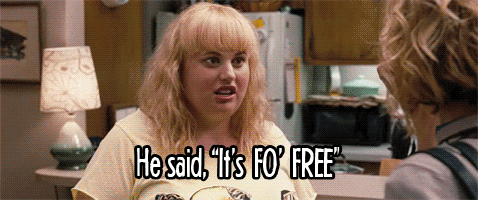Our Black Year is a book that gives a first-hand accountant of one family’s request to purchase goods and services from Black-owned business for the entire year of 2009. The author, Maggie Anderson and her husband, John, begin an initiative to draw more awareness to Black businesses so that more revenue can be circulated in the Black community. They started this movement in their city of Chicago called the Empowerment Experiment. They knew that this initiative wasn’t going to be easy, but they didn’t have any idea of the challenges that they would come against them. Lack of capital and community support is often the demise of black-owned businesses.
The Andersons journey started when they discussed the economic disparities in the Black community. Statistically, Blacks have higher unemployment, lower average household net worth but has the highest aggregated disposable income of 1 trillion dollars. In the age of the first Black president, Barack Obama (who was Maggie Anderson’s favorite law professor), Black billionaire Oprah Winfrey, and over currently 30,000 Black millionaires in the United States, Black are still at a disadvantage when comes wealth and prosperity. While these statistics come about these issues of Blacks not being financially capable compared to other ethnic/racial groups, no one tries to find the solutions on how to close the gaps. By the Anderson’s pledge to only “buy black,” it shed a light on how giving to Black-owned business will revolution Black communities. In the findings, there were services they couldn’t find a Black owner, while other services were outside of their Oak Park neighborhood as far as 50 miles. They already have a daycare provider for the two young daughters, Cara and Cori. They were able to find restaurants, gas stations, automotive repair services, and financial services. But they weren’t able to find lawn treatment services, utilities, appliances, luxury housewares, and specialty clothing merchandise like sneakers, women undergarments. The biggest hindrance they were faced was finding a Black-Owned grocery store. They had found one called Farmer’s Best Market owned by Karriem Beyah. They developed a partnership with used the store to bring attentions to the issues. They did sponsor community activities, ran ads through the media, and even begged friends to patronage the store but unfortunately, it closed its doors in July. They choose to not to give up, instead they continued to look for other ways to find food including eating out more frequently and purchasing from Black stores that were subpar.
The Andersons faced another difficulty that is often crippling the Black community, changing the inferior mindset of Blacks. Asians, Indians, Hispanic, Whites and other ethnicities have business in Black communities, yet they don’t contribute and/or hire those within the community. Unfortunately, it has become the social norm to the point that mainstream media even agrees with it. Movies like “Do The Right Thing, The Obama Effect,” shows the acceptance of Blacks patronizing businesses that don’t have their interests. It’s also about defeating the “if it’s black, then it’s not better” theory. The Andersons meet this ideology head on when speaking a radio program while trying to give awareness about the importance of supporting Black businesses, she was met with people who gave testimonies on why they would never do business with Blacks ever again. The most disappointment event was when a major Black-owned publication refused not only to endorse them. But threatened legal action to change the name of this project, initially called “The Ebony Experiment.” This was the expected racism from within and also outside the Black community. The Anderson also received emails from those other ethnicities, sometimes gaining support while mostly receiving hate mail and called every name in the book. The Andersons did national TV appearances, they were featured in the major media and print outlets, and Maggie had speaking engagements at college/universities, churches, business conferences, and activism conventions. They utilized Facebook to build a platform via social media. They also have a website (www.eefortomorrow.com) that gives more information about the initiative.
The book also highlights the history of Black and economics, by making several reference points to the prosperity that later resulted in the poverty for Blacks. After Reconstruction small communities were developed and they were known as the Black Wall Street. The Greenwood section of Tulsa, Oklahoma community that consisted of black-owned business and professionals was burned down by angry whites based on lie, known as the Tulsa Riot of 1921. Another one example was Durham, North Carolina, that produced Black-owned insurance companies and banks located on Parrish Street, but the Interstate Highway Act caused its demise and it was destroyed for the construction of an expressway. Then there was Jackson Ward located in Richmond, Virginia that was full of thriving black business especially in the entertainment industry, but when integration was legalize, Black left the community causing it to go into ruins. Speaking of integration, the book also brought up the issue of class. When Blacks were able to gain upward mobility, they take their income with them leaving the Black communities to fend for themselves. Or as a person once stated, climbing up the ladder and pulling it up from behind you. They were also the fear of Blacks being associated with the initiative and it causing jeopardy to their livelihood.
The Andersons also employed the services of the Kellogg School of Management to keep tracking their expenditures. The report showed the Andersons spent over $48,000 to support Black-owned business. The report also showed what would happen if Black people also spent approximately the same percentage as the Anderson, roughly 68%, how much stability these businesses would have. The report also shows the potential of jobs that would be created as a result of Black-owned businesses getting more support from the community. Outside research also shows the lack of capital and/or credit that a business can receive from banks.
The book employs others to also “buy black.” In the Asian community, a dollar circulates within its community up to twenty-eight days, but in the Black community, a dollar leaves within six hours. Blacks spend an average of 2% to 5% of their income to Black-owned businesses. By not supporting Black-owned business, the disadvantages become greater. Besides the government, the highest employers for Black labor are Black-owned businesses. The results in not supporting these businesses lead to higher unemployment rates, higher crime rate fueling the mass incarceration industrial prison complex power structure, lack of resources for community and educational programs.




















